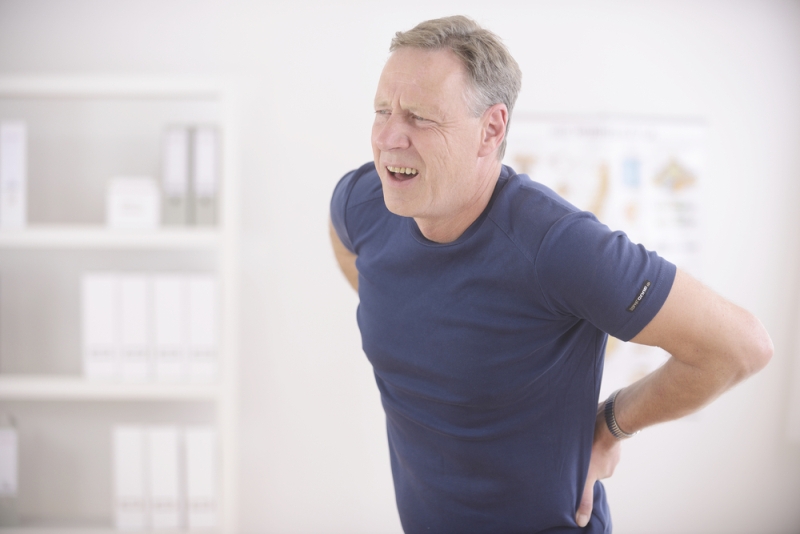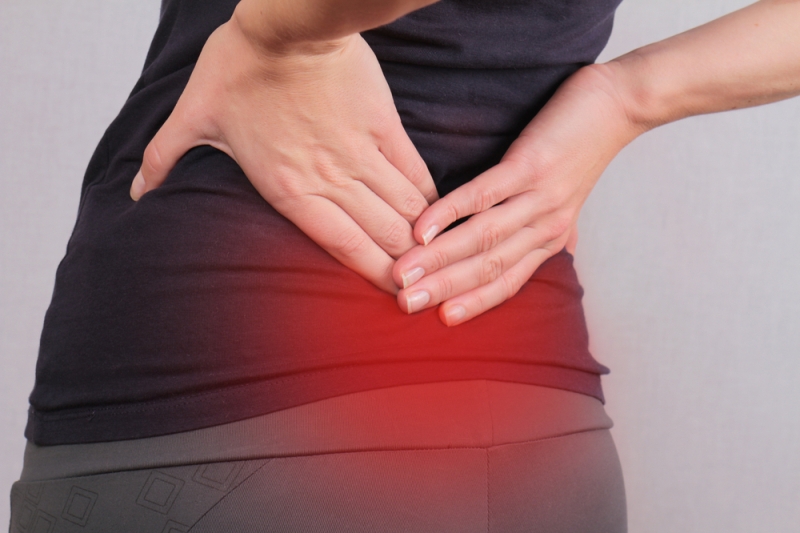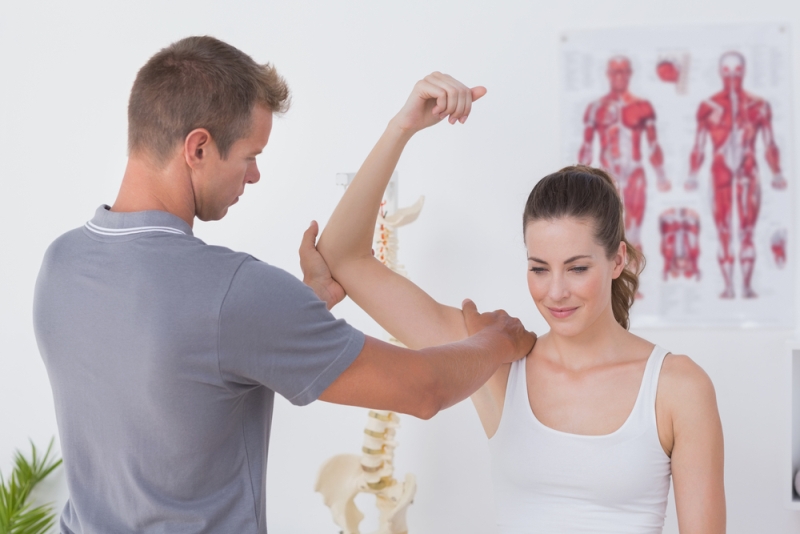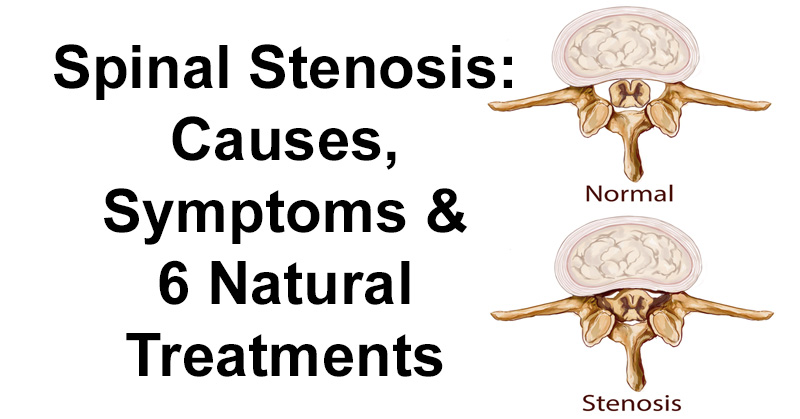Spinal stenosis is a condition caused by the narrowing of the spine canal, where nerves run down the center of the back. Spinal stenosis causes increased pressure on the spinal cord and the nerves in the back, leading to back pain and other nerve problems. Most people develop spinal stenosis symptoms in their lower back and neck, but it’s also possible to suffer from problems related to nerve damage in other parts of the body. (1)
Conventional spinal stenosis treatment may include over-the-counter medication to help relieve pain, while natural treatment focuses on exercises to maintain flexibility and movement, and methods to dull pain without medication.
Spinal Stenosis Causes
“Stenosis” refers to the abnormal narrowing of a body channel. Spinal stenosis causes narrowing in the bone channel occupied by the spinal nerves. The condition most often occurs in adults age 50 and older who have weakened joints and ligaments, cartilage loss and degeneration. Common disorders that can contribute to stenosis include osteoarthritis, degenerative joint disease, rheumatoid arthritis, sciatic nerve pain, spinal injuries or tumors and genetic disease that affect the back bones. (2)

Types of Spinal Stenosis
- Lumbar Spinal Stenosis: About 75% of spinal stenosis cases, occurs when nerve roots in the lower back become compressed, causing symptoms similar to sciatica.
- Cervical Spinal Stenosis: Causes pain in the neck along with other nerve problems.
- Thoracic Stenosis: A rare form of stenosis that affects the middle/upper portion of the spine.
Spinal Stenosis Symptoms
- Back pain, especially in the lower back
- Neck pain and stiff neck
- Tingling sensations, numbness and throbbing in the lower body
- Muscle weakness or pain around the top of the legs, knees and hips
- Impaired bladder or bowel control
- Pain when exercising or lifting heavy objects
- Loss of balance and falling easily
- Pain when standing for long periods of time, coughing, sneezing, bending, stretching or after getting up in the morning
- Extreme weakness and paralysis in severe cases

Spinal Stenosis Treatment
1. Exercise Regularly
Spinal stenosis exercises can help prevent back pain. A sedentary lifestyle won’t help relieve back problems. The Spine Health website suggests that patients with stenosis should “start slowly, and build strength and tolerance over time.” (3) The best spinal stenosis exercises include a combination of aerobic activities and bodyweight exercises to help lower inflammation levels, keep the joints limber and improve muscle strength. Follow the tips below for spinal stenosis treatment:
- If you feel strong pain while exercises, stop and talk to your doctor.
- Try to exercise regularly so your muscles feel warm and slightly fatigued, but not painful.
- Exercises that help keep the back strong include swimming, brisk walking, cycling, water aerobics and resistance training.
- Exercises that can help strengthen the back and core include squats, abdominal moves that bring the knees to the chest, pelvic tilts and full body moves including burpees.
2. Stretch
Stretching to maintain flexibility is an important part of spinal stenosis treatment. (4) Stretches that can help prevent and reduce back pain include:
- Sitting leg stretches
- Knee to chest stretches while on the floor
- Back stretches done while laying on the stomach and lifting the chest or legs
- Quadricep stretches, which can be done by standing, bending one knee and pulling the foot behind you
- Hip and hip flexor stretches done with your back on the floor, bend your legs, cross one ankle over the other knee and pull on the back of the thighs to deepen the stretch
3. Maintain Good Posture
Whether you are sitting or standing, poor posture can worsen spinal stenosis symptoms. Slouching causes strains around the spine. Find a chair that supports your back as your sit up straight with your heels on the floor and your knees slightly bent. You can place a pillow behind your back for extra support. (5)
4. Try Physical Therapy and Chiropractic Care
Physical therapy can help you maintain flexibility to improve healing. A physical therapist can recommend tips for using more supportive products such as shoes, pillows and mattresses. They can also help you improve your posture and suggest exercises to help strengthen your legs, core and back. Chiropractic care can help relieve back pain and reduce nerve pain damage. Chiropractors are trained to help realign the spinal discs to prevent further damage and reduce pain. (6)

5. Dull Pain Naturally
- Apply heat or ice to help relieve pain and reduce inflammation.
- Use a heating pad for 15-20 minutes several times per day.
- Take a hot shower or bath to dull pain. Add Epsom salts and essential oils to warm bath water for additional soothing effects. Try lavender oil or peppermint oil.
- Massage painful areas to help relax the muscles, increase blood flow and reduce inflammation.
6. Eat an Anti-inflammatory Diet
A healthy diet can help reduce inflammation and protect the body from complications that can worsen spinal stenosis. Inflammatory foods weaken the bones, muscles and joints. Lower your intake of sugar, processed meats, alcohol, packaged foods and processed snacks.
Fill your diet with anti-inflammatory foods such as leafy green vegetables and healthy fats like coconut oil and olive oil. And consider following a Mediterranean Diet!
Supplements that can help reduce inflammation include turmeric, omega-3 fatty acids, glucosamine and proteolytic enzymes. Avoid cigarettes, drugs and alcohol and be sure to get plenty of sleep each night. (7)


